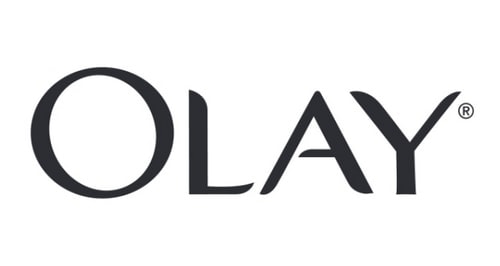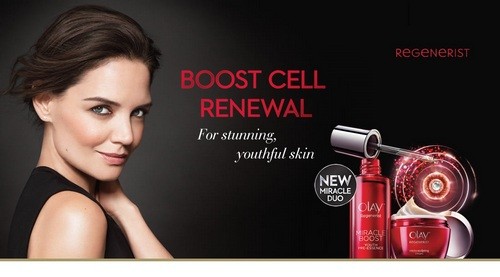The Marketing mix of Olay analyses the 4Ps of Olay, including the Product, Price, Place, and Promotions. Oil of Olay is currently referred to as Olay and is of American origins. It is a personal care brand associated with the FMCG sector. Olay was introduced to the consumer market in 1952 by its founder, Graham Wulff, and the product was sold under his Company, Adams National Industries or ANI. It is a subsidiary of its parent company, Procter & Gamble, that manufactures and markets it under the name Olay. Some of its competitors are as follows-
- Ponds
- Lakme
- Garnier
- Dove
- Nivea
- Estee Lauder
- L’Oreal
About Olay
- Type: Consumer goods company
- Industry: Personal care
- Founded: 1952
- Founders: Graham Wulff and Jack Lowe
- Headquarters: Cincinnati, Ohio, USA
- Area served: Worldwide
- Current CEO: Srinivasan “Sri” Reddy
- Number of employees: Over 10,000
- Major products: Skin care products, including moisturizers, cleansers, serums, and anti-aging treatments.
Table of Contents
Olay Product Strategy

Olay was introduced as a pink fluid packaged in a heavy glass bottle. With time, it has diversified into creating several items to meet various skincare needs depending on skin type, required product, and product line.
Olay, a prominent global skincare brand, offers products catering to skin care needs.
The new Product Mix of Olay in 2023 is as follows (Source).
- Skincare Ranges: Olay has developed specific ranges targeting different skin concerns and demographics. Notable lines include Olay Regenerist, known for its anti-aging properties; Olay White Radiance, focusing on skin brightening; Olay Natural White, catering to natural skin tone enhancement; and Olay Total Effects, offering a multi-benefit skincare approach.
- Product Types: The brand’s extensive product line encompasses a variety of skincare items, including moisturizers, cleansers, night creams, body wash, and sun protection products. This allows customers to choose products according to their skin concerns and types.
- Anti-Aging Focus: A significant part of Olay’s product strategy includes anti-aging products, such as the Olay Regenerist line, which targets a new market segment looking for youthful skin solutions.
- Key Ingredients: Olay incorporates ingredients like glycerine, vitamin B3, broad-spectrum sunscreen, and vitamin A derivatives across its product ranges. These ingredients are chosen for their effectiveness in skin nourishment and protection.
- Innovative Formulations: Olay strongly emphasizes incorporating scientifically advanced ingredients like peptides and niacinamide in their formulations. Peptides, such as Palmitoyl Pentapeptide-4 in the Olay Collagen Peptide 24 Plumping Face Serum, are designed to stimulate collagen production, improving skin elasticity and firmness. Niacinamide is another frequently used ingredient known for its skin barrier repair, moisture improvement properties, and reducing inflammation, hyperpigmentation, and wrinkles.
Olay Place Strategy
Olay started its operations in South Africa but spread quickly to international markets. It was introduced as the Oil of Ulay in Ireland and the United Kingdom, the Oil of Olaz in Germany, Netherlands, Italy, and France, and the Oil of Ulan in Australia. The Company opened A test market in Chicago in the United States. Later, the Company extended its marketing strategy and reach to several global countries like Spain, India, China, and the Philippines.
Olay utilizes the strong distribution network of Procter & Gamble and includes services of producing agents, distributors, companies, and retailers to reach consumers through an efficient logistics company, DHL Carrier. Products are easily available at convenience stores, discount stores, hypermarkets, supermarkets, malls, and beauty product shops.
Olay’s place strategy, which refers to how and where its products and business are distributed and made available to customers, can be summarized as follows:
- Global Presence: Olay has established a significant global footprint, with its products available in numerous countries, including the United States, United Kingdom, Ireland, China, India, and several countries in Europe, Asia, and Africa.
- Retail Availability: Olay products are widely available at various retail outlets, including supermarkets, drugstores, and cosmetic stores. This broad retail presence makes it convenient for customers to find and purchase their products.
- Online Sales Platforms: Olay products are also available through various online e-commerce platforms, enhancing accessibility for customers who prefer online shopping. This includes both Olay’s website and other major online retailers.
- Diverse Market Adaptation: Olay adapts its product offerings to suit the preferences and needs of different markets. For example, specific products like Olay Body and White Radiance were launched primarily in America and Asia, respectively, indicating a tailored approach to different regions.
- Strategic Market Entry: Olay’s expansion into new markets has been strategic, as seen in its launches in the Philippines in 2006 and India in 2007. This strategic approach helps in establishing a solid market presence in various regions.
Olay Pricing Strategy
Olay is a multi-billion-dollar company, and at the end of the fiscal year 2009, its revenues were estimated at 2.8 billion dollars compared to the total revenues of its owner at 79 billion dollars. The Company has targeted women as its potential customers, women aged 14 to 45 from society’s upper and upper-middle class. To a considerable extent, a pricing strategy depends on the product’s perceived value. Olay has been projected as a premium brand in the consumer market and has adopted a premium pricing policy. It has tasted success with its implementation as its users do not mind spending a high amount for such a qualitative brand.
Olay’s pricing strategy is a nuanced blend of market positioning, promotion, customer segmentation, and competitive benchmarking, reflecting its status as a premium skincare brand. Here’s an analysis of their pricing approach:
- Premium Positioning: Olay targets the higher middle-class demographic, positioning itself slightly above many competitors in the skincare market. This premium pricing aligns with the brand’s image of offering high-quality, effective skincare products.
- Value-Based Pricing: The brand’s pricing strategy is to deliver value to its customers. Olay products are perceived as effective, particularly in areas like anti-aging, fairness, and dark spot reduction. This perception allows the brand to command a higher price point because customers believe in the product’s value and efficacy.
- Competitive Pricing Strategy: Olay’s pricing is also influenced by the strategies of its close competitors in the global market. By positioning its products within a price bracket similar to its competitors, Olay ensures market relevancy and sustains its competitive edge.
- Product Line Pricing: Olay employs a product line pricing strategy, where different ranges of products (such as Regenerist, Total Effects, and White Radiance) are priced differently based on their features and targeted customer segments. This approach allows catering to various consumer needs and preferences while maintaining a consistent perception of value across the product line.
- Geographical Pricing Adjustments: Recognizing the diverse economic conditions in its global market presence, Olay adjusts its pricing strategies to align with local purchasing power and market dynamics. This geographical pricing strategy ensures that Olay remains accessible and appealing to consumers in different regions.
Olay Promotion Strategy
Olay started its marketing policy by projecting its product as unique with remarkable properties. It was advertised with the help of print media with slogans like Share the secret of a younger-looking you. Advertisements included personal messages from fictitious advice columnist Margaret Merril to its readers and ran in newspapers and Reader’s Digest. With time, Olay started using several other advertising and marketing mediums to garner positive brand visibility. Its products are now advertised through descriptive and beautiful ad campaigns on television, radio, billboards, magazines, newspapers, and social media portals.
Some of its current taglines are Ageless, Love the skin you’re in, Challenge what’s possible, and Your Best Beautiful. Olay realizes the powerful impact of star power on brands and has roped in famous personalities for celebrity endorsements. In the global market, actor Katie Holmes is its brand ambassador in India, actor Madhuri Dixit for Olay Regenerist, Karisma Kapoor for Olay Total Effects, and Kajol and Katrina Kaif for Oil of Olay.
Some Recent Video ads and Print ads for Olay are:
Liked this post? Check out the complete series on Marketing Mix
